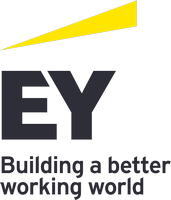EY refers to the global organization, and may refer to one or more, of the member firms of Ernst & Young Global Limited, each of which is a separate legal entity. Ernst & Young Global Limited, a UK company limited by guarantee, does not provide services to clients.
A people-first approach is a big step forward
AI is becoming a common theme in stories about companies’ responses to disruption. Stronger employee engagement and immediate growth are just two outcomes that organizations can trace back to AI.
But to get to this point, companies must first address complex issues, such as cultural alignment, talent, buy-in and trust. And to do this, they need to view an AI implementation through a human lens rather than treat it as a strictly technological effort.
Lili Gangas said that C-level executives should ask themselves a crucial question as they make decisions and as plans progress: “What are the unintended consequences that this technology is creating” for employees?
Leaders must also collaborate with their workers in developing and implementing integration plans. “CEOs need to be aligned with the feedback of their employees to be able to truly scale and integrate AI technologies into their infrastructure,” Jeff said. Without such support, it may become difficult — or even impossible — to transform AI’s potential into a reality.
Inclusiveness is a key element in battling bias
In addition, decision-makers’ plans must cover bias, a challenge with far-reaching impacts. By nature, machines themselves don’t have prejudices. However, data and AI technologies can reflect the biases of the humans who created and control them.
People often use data to inform their decisions, and they expect this information to be unbiased. That’s why detected bias can erode the trust an organization has established with its employees.
Preventing bias is dependent upon having the right people in place. This doesn’t mean just hiring the highest-skilled candidates (although that, too, can be an obstacle), it involves keeping the community in mind. And that’s where AI4ALL’s work comes in.




